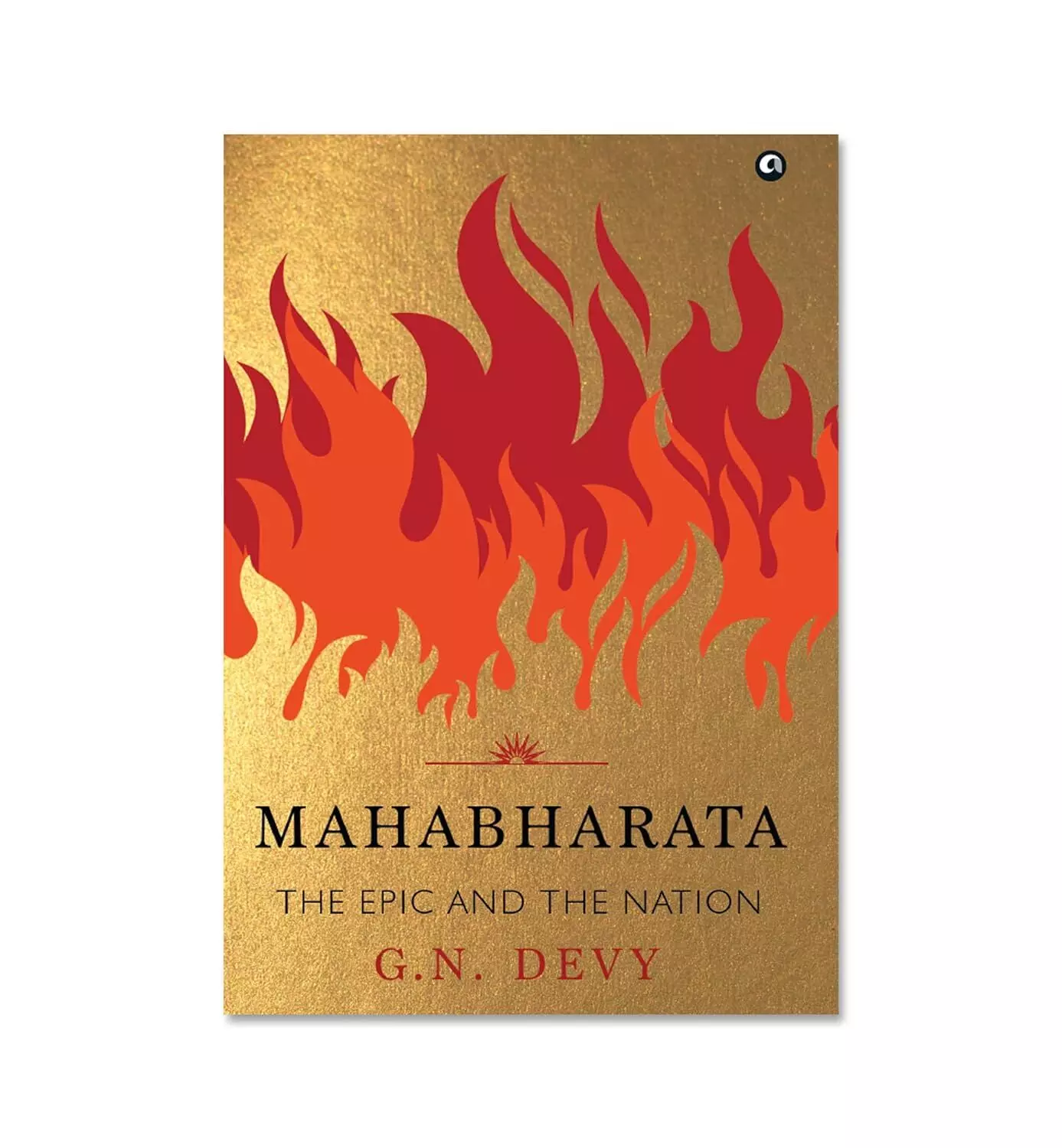An epic and the genesis of Bharat
In the book ‘Mahabharata: The Epic and the Nation’, GN Devy puts Ved Vyasa’s timeless masterpiece in the wider context of epic tradition — offering an understanding of how the Mahabharata spanning across Bharat’s geography and entailing all elements of human life, shaped the nation

Mahabharata: The Epic and the Nation’ by the polyglot GN Devy — the helmsman of the Peoples Linguistic Survey of India — is a fascinating book which looks at Mahabharata in the context of the epic tradition. The Mahabharata is a narrative of millennial yore, which spans generations and covers the entire geography of Bharat, and brings in all the elements which determine and shape human life —Kama, Krodha, Lobh, Moh and Ahankara (Longing, Anger, Greed, Attachment and Ego). The Mahabharata and its multiple versions have exerted a profound influence on millions of lives in the sub-continent, as well as in Myanmar, Thailand, Indonesia, Cambodia, Champa (Vietnam) and several islands in the Malay archipelago.
While kingdoms and dynasties have come and gone, religious sects have emerged and declined, schools of philosophy have waxed and waned, art forms have reached their zenith before the inevitable decline, the Mahabharata has never ceased to excite its readers, and writers have continued to draw inspiration from this epic. Manreet Sodhi Someshwar’s award winning book ‘The Radiance of a Thousand Suns (VoW Literature Award 2020) and the short-listed Non-Fiction book of 2021 (‘Shanti Parv: A Treatise on Peace’ by Punjabi writer Des Raj Kali) have actually incorporated stories and themes from the Mahabharata to give greater meaning and depth to their story lines. While in the case of Someshwar, she has parallel chapters from the Mahabharata on the right-hand side of the text, for Shanti Parv, the aphorisms of Bheeshama Pitamah are juxtaposed with the mutterings of Dalit characters who comment on the lived reality of Punjab in the aftermath of the Partition.
Therefore, the real success of this epic is that while at one level, it is just a story bringing together myth, legend, history and imagination, on the other, it is interspersed with deep philosophical insights and political episteme. In itself, the narrative is fairly simple: a devastating war fought between cousins, with all the regional contemporary rulers of the time aligned on either side. However, because this 18-day war also incorporates the Bhagwad Geeta, or the Song Celestial, it has had a profound impact on such a wide range of people – from Mahatma Gandhi who interpreted it in his Vaishnavite tradition to Tilak who saw in it the call to action, to Einstein and Oppenheimer who saw in it the metaphysics of atoms and energy and their interplay.
As a linguist and professor of comparative literature, Prof Devy also gives his reader an insight into what an epic is. Why are they so long? Why do they span generations? What is the purpose? He asks, “what do all these long books achieve as a single spectrum of imaginative depiction of things near and distant?” He draws our attention to an (artificial) distinction made by the 18th-century European scholars in the context of their own tradition between the written and the oral epic. Thus Aristotle has argued – in the context of Greek tragedy – that it must have a ‘singular unity of place, time and action’ with a defined beginning, middle and end. By the time Milton wrote his excellent Paradise Lost, and rather mediocre Paradise Regained, an epic was only supposed to have ‘unity of purpose’.
The Mahabharata does all this and more. In fact, in the context of Bharat edging out India as the preferred name of this nation, this epic has amply demonstrated its salience in the memory and imagination of the multiple ethnicities and linguistic groups of this land. Devy goes on to suggest that Mahabharata “acquired a place in Indian imagination as a kind of a national epic – by imposing the concept of a nation on the kingdoms, kings, peoples and events described in the Mahabharata”.
However, the Mahabharata is more than a sum of its parts. As Swami Vivekananda wrote in 1900: ‘in speaking of the Mahabharata to you, it is simply impossible for me to present the unending array of the grand and majestic characters of the mighty heroes depicted by the genius and mastermind of Vyasa. The internal conflicts between righteousness and filial affection in the mind of the god-fearing yet feeble, old, blind king Dhritarashtra; the majestic character of the grandsire Bheeshama, the noble and virtuous character of Yudhishtra and of his four brothers as mighty in valour as in devotion and loyalty; the peerless character of Krishna, unsurpassed in human wisdom; and not less brilliant the characters of women – the stately queen Gandhari, the loving mother Kunti, the ever devoted and all suffering Draupadi – the and hundreds of other characters of this Epic (and those of the Ramayana) have been the cherished heritage of the whole Hindu world for the last several thousands of years and form the basis of their thoughts and of their moral and ethical ideas”
Need one say more?
The writer, a former Director of LBS National Academy of Administration, is currently a historian, policy analyst and columnist, and serves as the Festival Director of Valley of Words — a festival of arts and literature.




